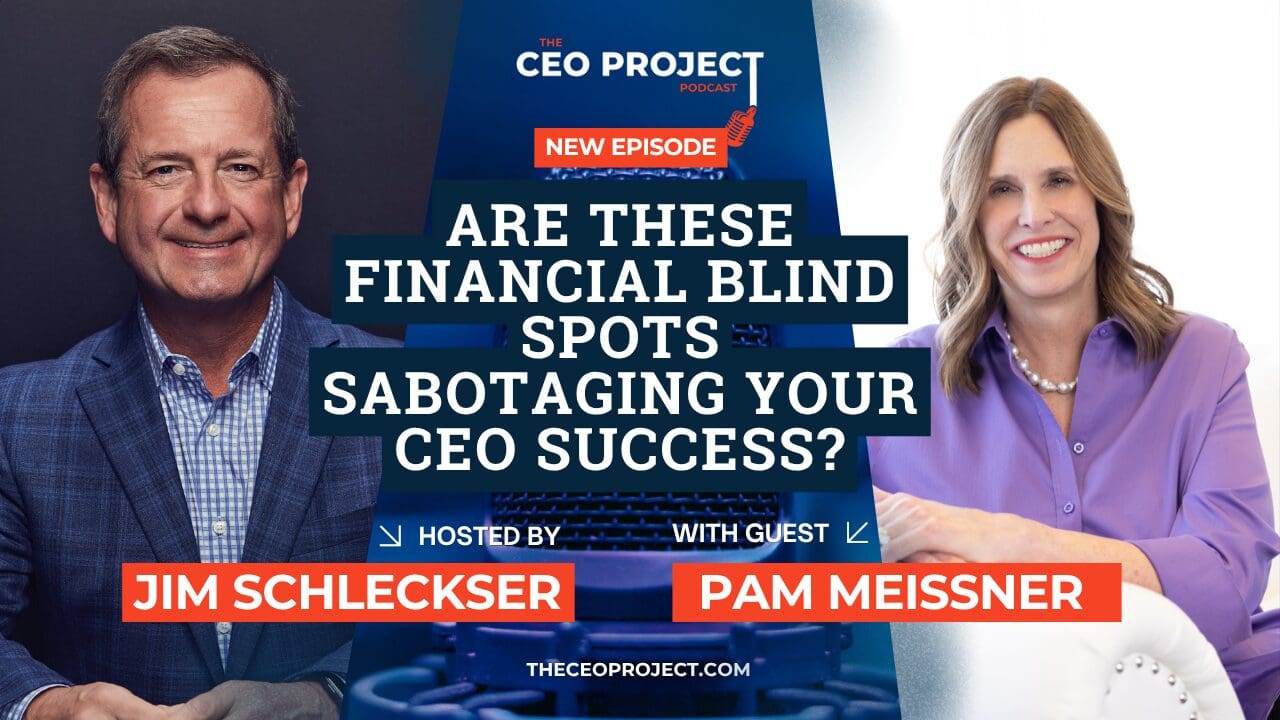Ever feel like your gut tells you one thing, but the numbers tell you another—and you’re not sure which to trust as a CEO? Do you have financial blind spots?
If you’ve ever felt overwhelmed by financial reports, hesitant to ask “basic” money questions, or unsure how your cash flow can look great on paper but tight in practice, this episode is for you. You’ll hear how understanding your company’s finances at a deeper level can help you make smarter, faster decisions—without needing to become an accountant.
In this conversation with financial leader Pam Meissner, you’ll learn how to:
-
Simplify financial statements so you actually use them to lead, not fear them.
-
Build cash flow confidence by spotting problems before they become crises.
-
Turn financial data into clear, actionable strategies for growth.
Listen now to discover how trusting your gut and mastering your numbers can transform the way you lead your business.
Breaking Down the Financial Blind Spots Every CEO Faces
[02:10] – Jim Schleckser opens the episode by admitting that not every CEO is deeply “numerate.” He introduces guest Pam Meissner, a finance executive known for turning complex financial data into actionable strategies.
[07:45] – Pam recounts how she left Pricewaterhouse in Chicago to pursue riskier, more exciting international work, helping privatize companies in Poland and expand Nestlé’s Russian operations to a billion-dollar valuation.
[12:30] – The two discuss cultural lessons from doing business abroad—especially in Russia—where Pam learned that moral relativism can make “truth” flexible, and leaders must adapt quickly to succeed.
[18:55] – Jim and Pam explore one of the biggest financial blind spots CEOs face: trusting the numbers more than their instincts. Pam emphasizes that gut feel, paired with good data, is a CEO’s best financial tool.
[26:20] – Pam reveals that nearly half of CEOs don’t fully understand the balance sheet or its relationship to the cash flow statement and P&L—and why that gap creates major financial blind spots in leadership decision-making.
[32:40] – The conversation turns to the role of a good CFO as a “translator” who helps simplify numbers and make them meaningful for CEOs who aren’t finance experts.
From Cash Flow Clarity to Confident Leadership
[39:15] – Pam and Jim dig into why profitable companies still run out of money, stressing that the number one rule of business survival is: don’t run out of cash. They share tactics for forecasting and protecting cash flow.
[48:10] – Pam introduces “circuit breakers,” a system for identifying warning signs before they turn into crises. This proactive mindset helps CEOs spot financial blind spots early and pull the right levers before it’s too late.
[57:30] – The discussion shifts to the dangers of “bad money” such as invoice factoring or high-interest loans that trap businesses in debt cycles, and how to recognize healthier funding alternatives.
[1:06:50] – Pam explains when growing companies should hire a fractional or full-time CFO, and why the right financial leadership can elevate a CEO from reactive problem-solver to confident strategic leader.
About Pam Meissner
Pam Meissner is a seasoned financial and operational leader with experience as CFO, COO, and CEO across multiple industries. She’s helped scale companies to billion-dollar valuations by turning complex financial data into clear, actionable strategies for growth.
With a global outlook shaped by extensive travel and cultural immersion, Pam champions adaptability, innovation, and diverse thinking in leadership. Her career is marked by resilience—recently widowed after 30 years of marriage, she continues to lead with purpose and strength. She’s also a proud mother: her son, who has autism, recently graduated from college, and her daughter runs marathons to raise funds for autism research.









